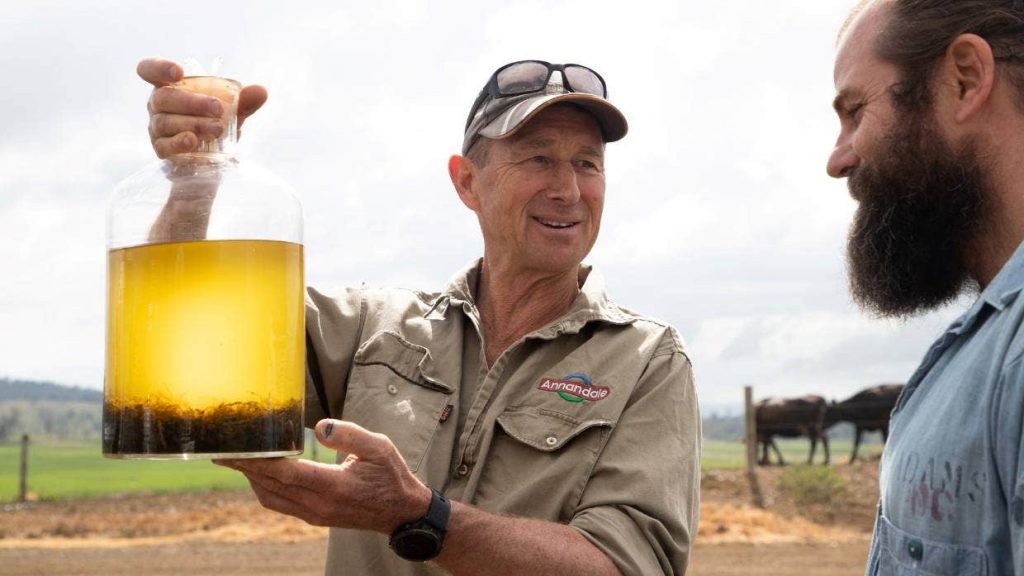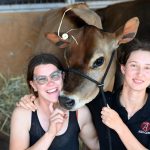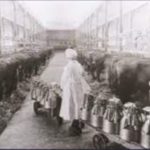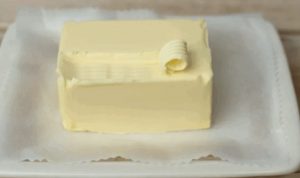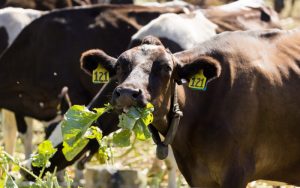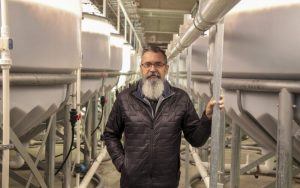
When Tasmanian dairy farmer Richard Gardner heard Fonterra planned to trial red seaweed to cut methane emissions, he didn’t roll his eyes or stick his head in the sand. He wanted in.
A Nuffield Farming Scholarship in 2003 cemented his conviction that climate change was a real threat, and he worried we weren’t doing enough to tackle it.
Lab research had shown promising results, and Tassie company Sea Forest was already producing the asparagopsis armata seaweed that grows in the cooler waters of southern Australia and New Zealand.
So Gardner volunteered his 900-odd dairy cows to test it out.
“I’m raising a flag because I think someone has to do something about it,” he says.
That was in 2020. For two years, Gardner has been carrying the weight of New Zealand dairy’s methane-busting great red hope.
From what he’s seen so far, he’s convinced the supplement is working. But the big question still to be answered is, just how well.
The missing magic number
With methane from agriculture making up about 35% of New Zealand’s greenhouse gas emissions, an effective methane blocker would be a game-changer for the country’s climate footprint.
Cow stomachs contain micro-organisms called methanogens, which combine hydrogen with carbon dioxide to produce methane and water. The methane, or CH4, is released when the animal burps.
A single cow can belch out 100kg of methane a year, which has the same climate impact as about 2500kg of CO2.
Asparagopsis seaweed is one of two leading hopes to reduce emissions by preventing methane being formed. The other is Dutch-produced supplement Bovaer.
Asparagopsis contains the chemical bromoform, which is what inhibits methane production.
While lab research has found giving grain-fed animals asparagopsis with every mouthful of their feed can reduce methane emissions by up to 98%, that’s not how we farm in New Zealand.
Feeding a supplement to cows that roam free and snack on grass at will is an entirely different equation.
Which is where Gardner comes in.
By the time Sea Forest’s asparagopsis supplement is fed to cows, it doesn’t contain seaweed at all. The fluffy red algae is steeped in canola oil, so the bromoform infuses into the liquid.
Gardner then sprays about 100ml of oil on to the supplementary grain he feeds the cows once a day in the milking shed.
Gardner’s first 10-week trial didn’t show much impact. But it also didn’t turn up any of the problems that research suggested might be an issue, such as cows losing weight or producing less milk.
But the second trial did make a difference.
Trying to measure how much gas cows burp out in an open field is mighty tricky. Or probably impossible.
“The biggest challenge has been, we’ve had no way of measuring the methane levels on the farm,” Gardner says.
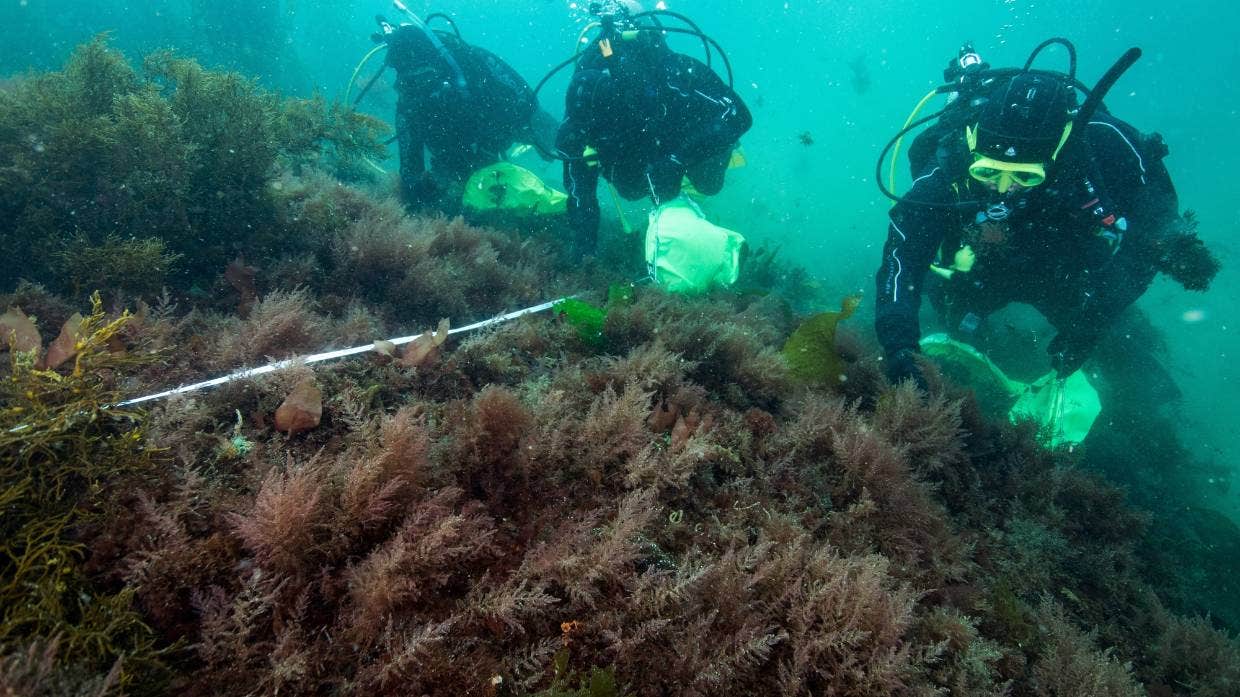
Divers from the University of Otago survey a bed of the methane-busting seaweed asparagopsis at Rakiura Stewart Island.
So he is instead measuring how much grass they eat. The theory is that making methane wastes energy, so if you stop that process cows should eat less, without losing weight.
In the second trial, the 200 cows fed seaweed oil ate almost 10% less than the 200 control cows.
But what that means in terms of methane reduction is still unclear, Gardner says.
“I’m definitely not quoting 80-90% … I’m 100% confident that the bromoform in asparagopsis is going to have an impact in reducing methane emissions out of ruminants. I’m not going to tell you what level that’s going to be, though.”
Even if you can prove significant methane reductions, there are still “a whole heap of things that have got to be resolved”, Gardner says.
At the current cost of a bit less than $1 per cow per day, it won’t be affordable without subsidies.
“What we’re trying to find out is where are the efficiencies? What’s it going to cost to feed it? What are the logistics? And hopefully, if the methane data comes to fruition, then how much methane is it taking, and what’s that worth to us?”
There’s also the question of supply. Production would have to ramp up massively to serve all of Australasia.
While several companies have now nailed down the seaweed’s tricky life cycle to enable them to farm it, supply is limited.
Research estimated feeding just 20% of New Zealand’s 6.3 million dairy cows an asparagosis supplement would require about 25,000 tonnes of dry seaweed a year.

Tanks containing asparagopsis seaweed at CH4 Global’s Bluff Eco Park.
As well as Sea Forest, asparagopsis company CH4 Global is growing the seaweed in Australia and New Zealand.
Its aquaculture farm in Bluff expects to start commercial supply in March 2023, but won’t hit the farm’s full supply target of 15,000 cattle until 2025.
The company is also targeting Australia’s big beef cattle feedlots, rather than New Zealand’s more logistically difficult pasture-based farms.
An October 2022 analysis in Frontiers in Animal Science noted that large-scale aquaculture needs energy to supply light and heat. And that comes with a climate cost.
However, the paper concluded “preliminary estimates seem to indicate the benefits outweigh the risks”.
Mark Aspin, Pastoral Greenhouse Gas Research Consortium (PGGRC) general manager, previously raised concerns about the practicality of dispensing asparagopsis on pasture-based farms, and the risk of the seaweed’s active ingredient, bromoform, bleeding into milk.
America’s Environmental Protection Agency classified bromoform as a probable human carcinogen, so it could be a food safety risk.
“I think the two issues still sit there. They’re not insurmountable, but I’ve not seen any work done in dairy cows that gives us clarity,” Aspin says.
But the biggest unanswered question remains how effective it will be for cows eating it once a day then grazing for hours, rather than consuming it with every mouthful of feed, he says.
“Really in our New Zealand farming system, that’s probably the critical question. If you could feed seaweed as a supplement once a day, what’s the impact on methane reduction?”
The winning formula?
While asparagopsis has had plenty of hype, it’s not the only potential tool in the methane-busting toolbox.
Jane Kay, Dairy NZ principal scientist for new systems, says Bovaer, asparagopsis and synthetic bromoform are all promising inhibitors in farms such as feedlots, where cows are kept in confined quarters and given dry feed. But they’re all challenging for New Zealand’s pasture-based farms.
Only about 30% of Kiwi dairy farms can feed a supplement in the milking shed.
Regulation will also be a significant challenge, as New Zealand hasn’t yet designed rules for methane inhibitors, Kay says.
Bovaer is further down that track, having been approved in more than 40 countries, including the European Union. But it took almost a decade from first patent to first approval.
Kay notes that the 2022 Biological Emissions Reduction Science Acceleration plan prioritised Bovaer and synthetic bromoform-based inhibitors, rather than asparagopsis.
Any new technology needs comprehensive testing, and certainty of supply, she says.
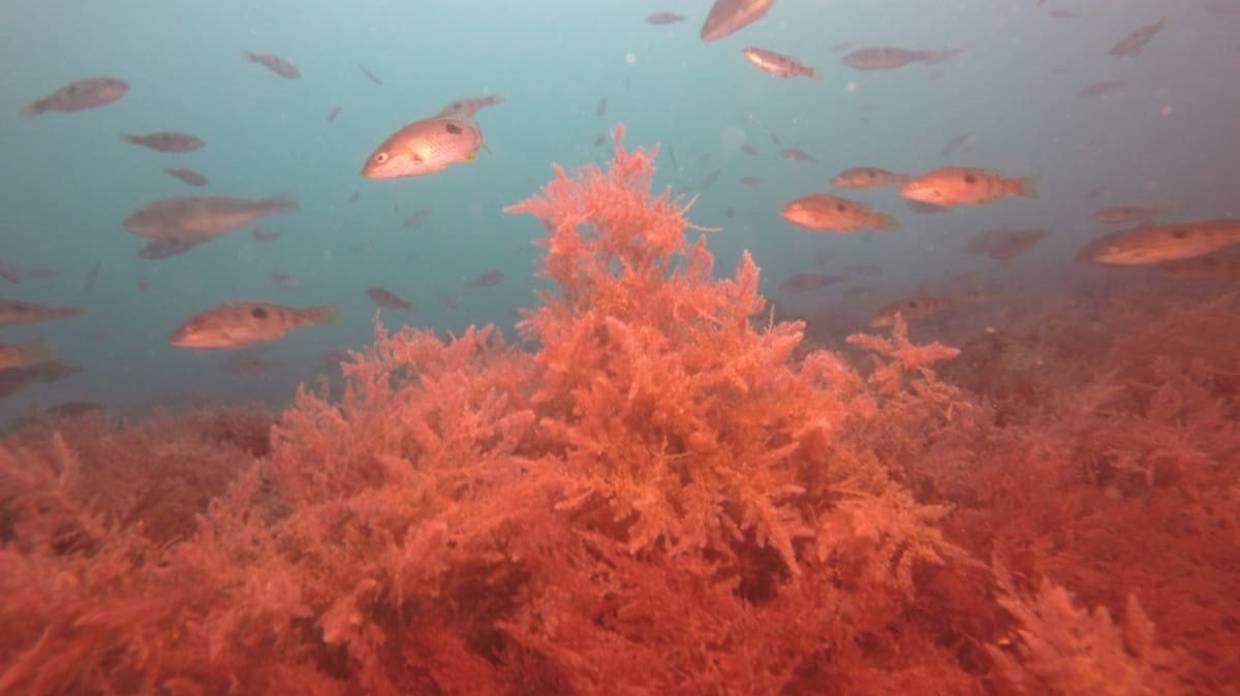
Asparagopsis armata off the coast of Stewart Island.
Fonterra’s GM of sustainability for global markets, Jack Holden, says it’s far too early to pick a winner in the methane-reduction race.
“I don’t think we can, and I don’t think we have to, either. It’s not a one-trick pony. We need as many as we possibly can.”
His strategy is to work out logistics for several options – including a kind of cow kombucha – so they’re ready to go when the science gives the tick of approval.
“It’s a multi-solution thing here. This is a really good candidate. We’re pretty excited by it. We’re certainly very excited by kowbucha and the probiotic solutions might be real game-changers as well.”
While he reckons asparagopsis will achieve emissions reduction of greater than zero on pasture-based farms, Holden is not expecting the oft-quoted rates of 80-90%.
The Fonterra trial, which will this year expand to include another two Tassie farms, can’t measure methane reductions. That data will have to come from founding researchers CSIRO.
But what they are measuring is animal health and food safety.
Holden says bromoform bleed has not emerged as a significant problem, but a standard might need to be developed for safe bromoform levels in milk.
Another potential issue raised by researchers was that the iodine-rich seaweed could lead to iodine spikes in milk. That hasn’t been an issue, Holden says. That might be partly because the oil formulation doesn’t contain the seaweed itself.
CH4 Global’s freeze-dried supplement, however, does contain the actual seaweed. The company says it will continue producing freeze-dried seaweed, despite one research paper finding it had a shorter shelf-life than oil, because that’s what’s been used in the safety and effectiveness studies.
But most research also uses the seaweed’s warm water species, called taxiformis, rather than New Zealand’s native armata.
Holden says the cost of asparagopsis supplements would also need to drop significantly to make them viable.
“Scale is part of the solution there, but can you produce at scale? I think there’s still some work to do there.
“We need a product that’s safe, that makes farmers more profitable rather than less profitable, and gives us a lower greenhouse gas footprint. All of those challenges have to be met. If we fail one, then it’s back to the drawing board.”
